Ace Every Marketing Campaign with Advanced Segmentation Capabilities
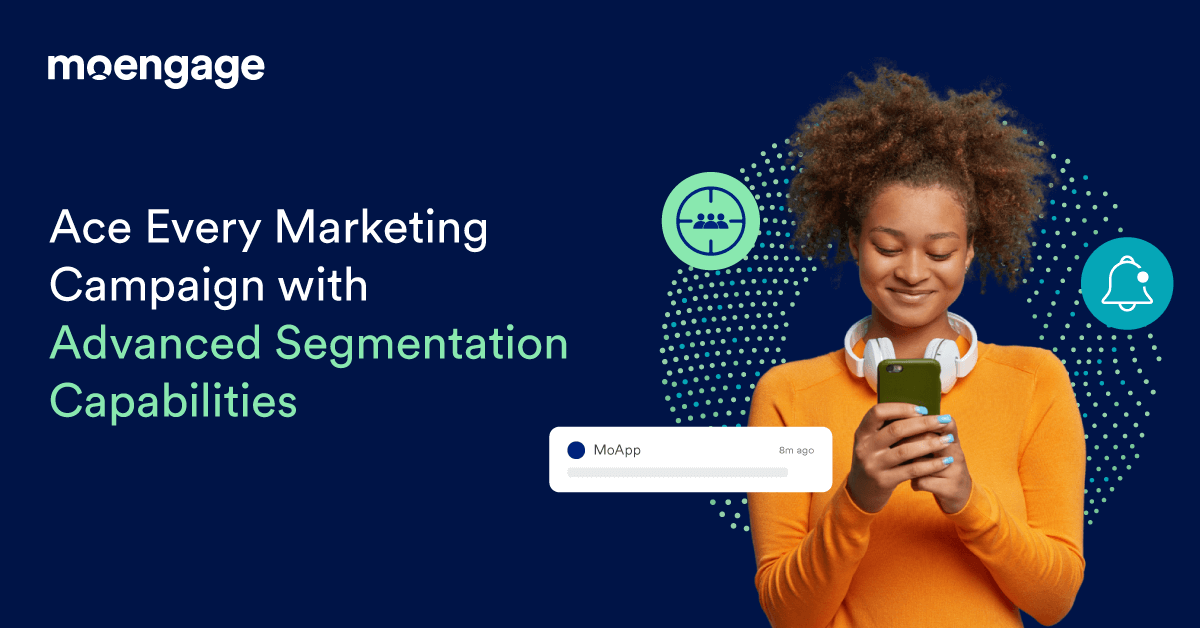
Reading Time: 5 minutes
Every day, customers are inundated with a barrage of emails, app notifications, and messages. While brands personalize their campaigns, only 40% of customers1 find them relevant to their tastes and interests. Most of these messages end up in the trash folder or are ignored. At the same time, customers are also actively searching for brands that offer what they need. Up to 91% said2 they would shop with brands that offer relevant recommendations.
Relevant messaging and personalization go hand-in-hand with audience segmentation. Brands need to categorize customers into different segments based on parameters like their demography, psychography, purchasing habits, and behavior.
Segmented campaigns record 100% higher opens and 27X greater click-through rates than non-segmented ones. In fact, studies show that segmented campaigns can improve a brand’s revenue growth by 760%3.
But there’s no one-size-fits-all approach to segmentation. Segmentation differs for every use case. Additionally, traditional segmentation methods are manual and based on hypotheses, which makes them error-prone.
As brands scale, the need for a comprehensive customer engagement platform that offers robust segmentation capabilities becomes evident. The platform needs to segment customers automatically and empower brands to engage with customer segments using relevant messaging. Here’s a quick look at each of the segmentation capabilities available with MoEngage.
1. Identify How Customers Are Feeling
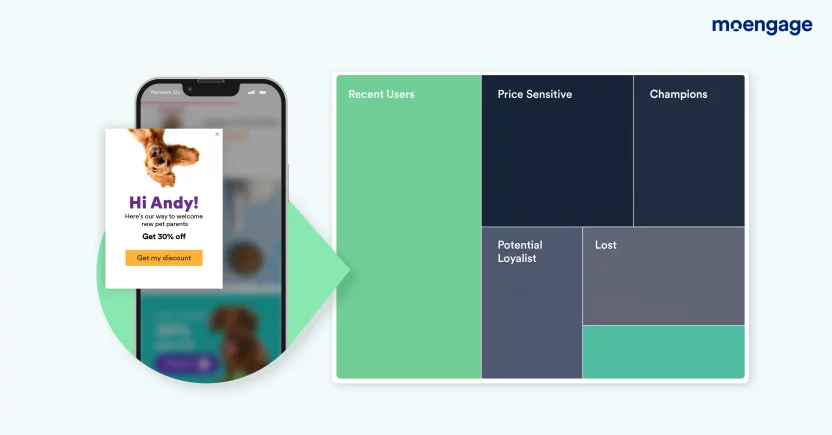
With RFM segmentation, you can group customers into different segments based on their recency, frequency, and monetary value of transactions. This will help you automatically identify customers who are most potential loyalists, likely to churn, about to sleep, need attention, or champions of your product.
Use this information to craft relevant campaigns that cater to their needs. For example, use RFM segmentation to identify customers who are price sensitive and send them a bigger discount campaign. At the same time, send a re-engagement campaign to customers who are about to sleep.
2. Understand How They Progress in the Journey
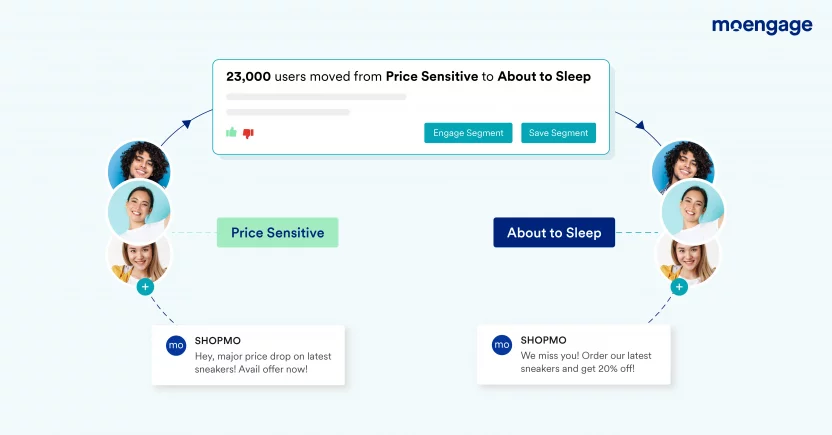
Check Segment Transitions to understand how many customers have moved from one RFM segment to another. For example, you can check how many customers have moved from ‘about to sleep’ to ‘recent users’, signaling that a campaign you sent out might be working well.
On the other hand, a large number of customers moving from ‘potential loyalist’ to ‘about to sleep’ would signal that this customer segment isn’t being engaged in the right way. This segment needs immediate attention.
3. Read Between the Lines
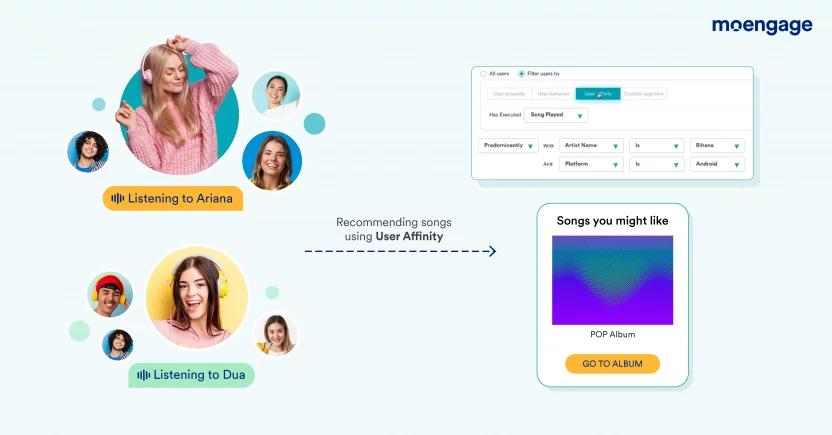
Identify customers who have an affinity for certain products and segment customers based on whether they’ve predominantly performed an action. MoEngage Affinity Segments allow you to go beyond demographic and geographic segmentation to understand which customers have an affinity for certain actions, products, or services.
This enables brands to automatically analyze the overall interests, preferences, and lifestyles of customers to understand their overall identities. Brands can use this information to identify things like:
- Which customers might like listening to Madonna
- Which customers enjoy spending via credit cards as the month ends
- Which customers prefer booking staycations for long durations
- Which customers like to shop for shoes from a particular brand
4. Create Insightful Segments with Actionable Analytics
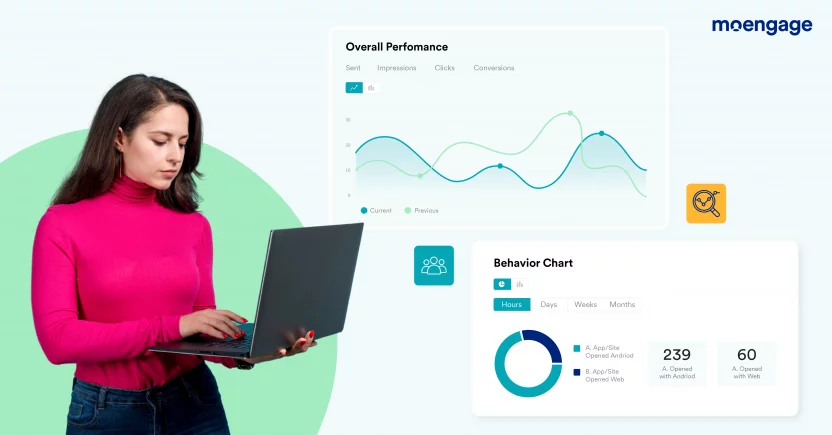
Create segments directly from the results of your campaign analytics. Leverage sophisticated analytical models such as Behavior Analytics to tap into customer behavior, understand how customers move between funnel stages using Funnel Analytics, and figure out what makes them stay on or drop off with Retention Analysis.
From these analytics, you can create segments with just one click and start sending out engaging campaigns for each segment.
| Learn how Wakefit, India’s leading D2C brand leverages behavioral analytics to increase revenue 2X. Read now –> |
5. Go One Step Deeper with And/Or Segmentation
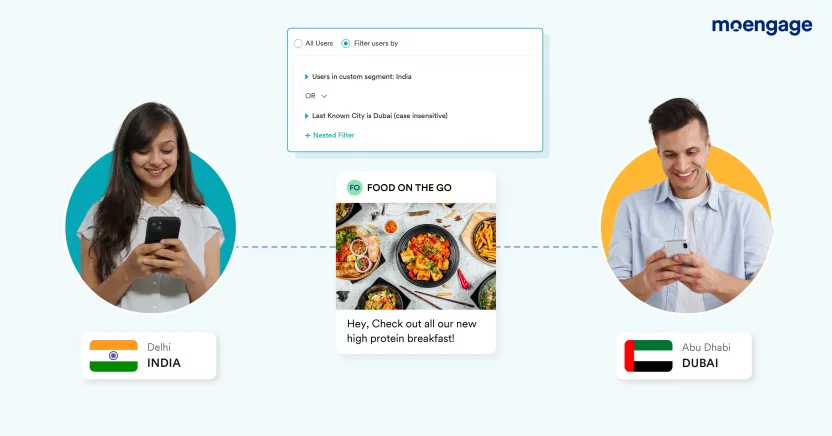
For complex business logic, you can create segments with AND/OR in tandem with customer attributes and events. It helps you build a deep segment for hyper-relevant campaigns. Use ‘AND’ to include customers with two or more similar attributes and ‘OR’ to reach customers who meet at least one condition from a group of conditions. For example, an E-commerce company that wants to run a luxury membership enrolment campaign can segment customers based on the following conditions:
- Reside in metropolitan cities
- Income is above 50 lakhs
- Placed at least 500 orders last year
- Avg order price was above 10,000
- Predominantly opened the app in the last three months
6. Create Complicated Segments with Ease Using Nested AND/OR Filters
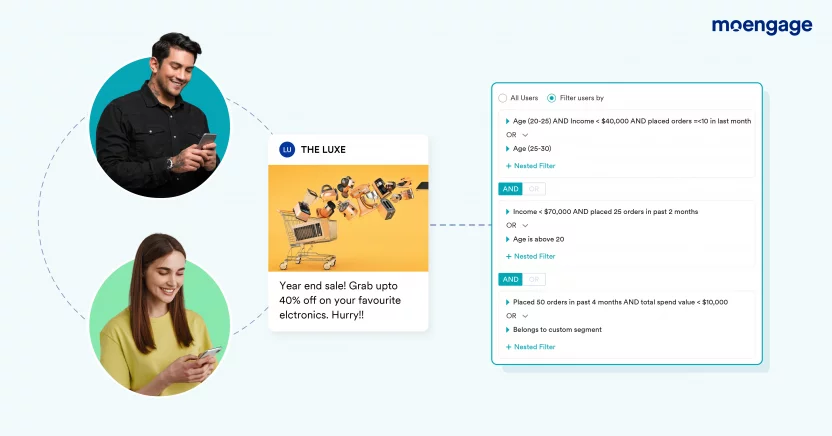
Combine multiple customer attributes, customer activity markers, affinity rules, and custom segments using Nested AND/OR conditions. Create robust, complex customer segments with ease.
This means that, along with (A and B and C and D), and (A or B or C or D), you can also create segments that satisfy the following configurations:
- (A and B) or (C and D)
- (A or B) and (C or D)
- (A or B) and C and D
- (A and B) or C or D
For example, you can create segments with specific criteria such as:
Age is between 20-25 AND Income is above $40,000 AND Has placed at least 10 orders in the past month
OR
Age is between 25-30 AND Income is above $70,000 AND Has placed at least 25 orders in the past 2 months
OR
Age is above 20 AND Has placed at least 50 orders in the past 4 months AND total spend value greater than $10,000
OR
Belongs to custom (uploaded) segment.
7. Segment your Segments with Recursion
Create segments within segments using MoEngage’s Recursive Segmentation. This helps brands create micro-segments for specific behaviors. You can add up to three levels of recursion. Use this feature to:
- Send discounts to customers who have earlier received discount campaigns
- Offer loans to customers who have earlier taken loans
Why MoEngage Segmentation Capabilities Are Great for B2C Marketers
Now that you’ve understood the different ways you can leverage segmentation using MoEngage, here’s a quick look at what makes stands the platform apart:
- You get two months of data retention for free, which can be extended up to three years.
- You can create unlimited filters based on event and customer attributes.
- You can use exclusion filters to exclude particular customers from campaigns.
- You can also segment customers based on aggregated attributes, such as customers who have spent a total of $1000 in the past month, etc.
- We provide a lot more date filters for all possible use cases around date and time.
Like MoEngage’s segmentation capabilities? Get in touch or schedule a quick demo.













